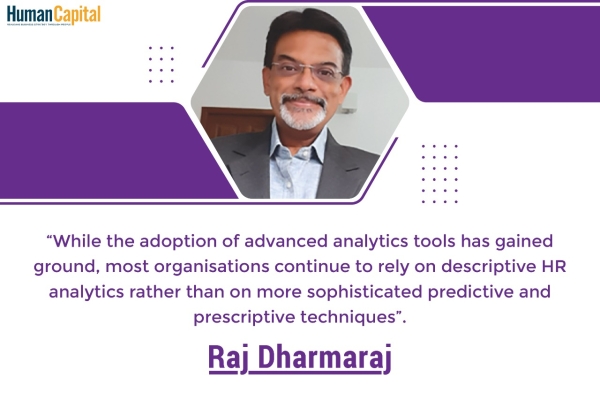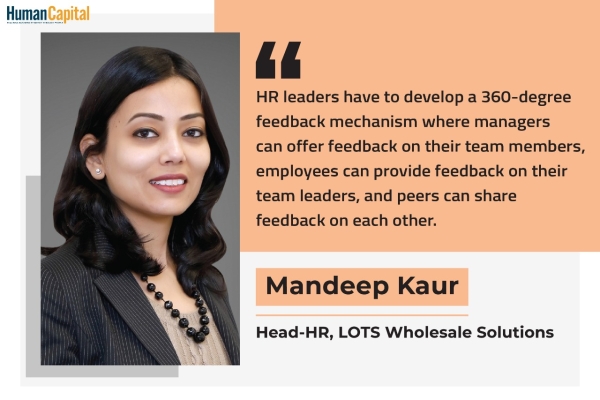Great organisations do invest in their people, but great professionals invest in themselves. They keep their foot on the paddle to enrich themselves by adding value to their work.
When I first came across the concept and principles of servant leadership as a style, it made me realise that it had a deep connection with what a great HR function of an organisation should be like! An organisation’s objective of serving, empowering and enabling its people-lead to reap the benefits of having a highly engaged, motivated and purpose-driven workforce. Being a winner in the marketplace requires a great deal of investment! For instance, investing in the present and future of products or services, improving the quality of customer experience touchpoints, more efficient and resilient internal processes or systems, advanced technology and many other factors.
What are we missing?
If we look at various published reports, many organisations understand the importance of investing in and building their human resource capital. This is owing to everything shall eventually be copied!
What truly gives an organisation the edge is its “people” aka Talent. This is the reason why an organisation wants the best human resource management practices since they position it to stand out in the marketplace. Effective HR practices come from having a strong HR team to make it a ground reality. Now that we understand the relationship and contribution, we must ask why is it that we often undermine the importance of continuous learning, development, and the exposure that HR professionals need? Today, it is relatively acceptable to understand and realise the importance of training employees (both reskilling and upskilling) in light of the changes and the disruption that is challenging businesses. However, the team that is the custodian of recruiting, attracting, developing and retaining talent is on many occasions excluded from the plan. How can this team effectively partner with the business if it is not:
• Aligned with the changes and trends required in human resource management practices?
• Equipped with the skills needed to meet the people needs of the organisation not only for today but also for the predictable future?
One may recall the instructions while flying - to first wear your oxygen masks before assisting others. Other than putting on one’s oxygen masks first, most of the time, the very team responsible for building and enabling is not investing enough in building itself!
I love how Josh Bersin addresses Human Resources not as a profession, but as a craft that requires investment through continuous learning and development.
Among many senior and successful HR professionals I have interacted with, what is common is their understanding to blend the technical HR expertise with competencies like business acumen, leadership and others. I cannot stress how important this is foundationally for anyone to have a successful career in HR!
• It changes the perspective of how we view our role in strategic alignment with the business goals and objectives
• Earns us a deserving seat at the table
Not devoting time
And yet, we find many organisations not devoting sufficient time and effort to build this within teams. Many of us are simply immersed in the processes, policies, procedures and systems with blinders without knowing the art and science behind human resource management or development. Similar to how we apply the 70:20:10 principle for employee learning, it is equally important to have an invested learning path and career track for HR professionals than just ‘doing’ the job.
A structured learning path encompassing formal courses, peer and community learning, and practical exposure goes a long way in enabling the all-round development of professionals, irrespective of whether it is a generalised or specialised role. There is simply so much to learn and grow, irrespective of the level one is at in the HR organisation structure. Here, one is referring to all the competencies that make one successful in their role. The depth or proficiencies of the KSAs (Knowledge, Skills and Abilities) will differ basis the levels and roles. There is a solid business case why organisations should invest in employees and this is why it must not be provided to a select few. It is very common to make this mistake in a function where it is not a normal practice to have a learning plan. Just like in technical profiles where earning a certification is about establishing credibility, it adds value to the work and credibility to the profiles of HR professionals too. The opportunities to learn should be targeted to enable employees to acquire or enhance their knowledge or skills needed for current and future roles.
The need to remain invested
HR Leaders also need to be invested to take up broader business roles including a pipeline for becoming CEOs. There are very few companies that do this and maybe fewer examples of those who successfully make this transition. In fact, we must consider mandating an HR stint in the development path for leadership roles in businesses.
Everything mentioned so far speaks about the organisation’s role in developing its HR professionals. The other dimension that one would like to bring forward is about our role in investing in ourselves i.e. #investinyourself!
On a personal note, great organisations do invest in their people, but great professionals invest in themselves. They do not assume that the organisation is obliged to invest in them and they keep their foot on the paddle to enrich themselves by adding value to their work. Sometimes, organisations develop a myopic view of how training or certification adds value to them other than the employee’s external-facing profile. This is why one feels that it is important for professionals who do so externally of their own accord to demonstrate how learning a new skill or concept or framework has helped them in their job. Slowly, this opens up avenues and strengthens the business case for organisations to lead the way.
Very recently, one came across the senior HR Head of an organisation who spent her “own” money to do a course from Harvard. While she was sharing her learning experience, she also shared how many around her thought that it was a waste if it was not being sponsored by the organisation. Remember, investing in yourself is never a waste – it will yield a great ROI than purchasing expensive gadgets or clothes lying in one’s wardrobe for years. Moreover, this investment must be thought about as something that will improve one’s purchasing power in due course! That said, like the HR Head, I have come across so many professionals now who do it for personal satisfaction- for their personal branding! One assumes that Maslow’s hierarchy can be a huge connecting factor!
In essence, an organisation that has strong HR practices has a strong HR team that understands the importance of investing self to empower others. Therefore, it is about continually investing in yourself and your team and demonstrating a learning and growth mindset right on one’s home ground!
Disclaimer: The thoughts expressed in this article solely belong to the professional and do not reflect that of the organisation she works for.

Does your organisation support you in maintaining work-life boundaries?
Trending
-
SBI General Insurance Launches Digital Health Campaign
-
CredR Rolls Out 'Life Happens' Leave For Its Employees
-
Meesho Announces 30-Week Gender-Neutral Parental Leave Policy
-
Microsoft Unveils Tech Resilience Curriculum To Foster An Inclusive Future
-
60% Indian Professionals Looking For Job Change Due To COVID: Survey
-
SpringPeople And Siemens Collaborate For Digital Transformation Push
-
86% Professionals Believe Hybrid Work Is Essential For Work Life Balance: Report
-
Almost 1 In Every 3 People's Personal Life Affected Due To Work Stress
-
Meesho Rolls Out Reset And Recharge Policy For Employees
-
80% Of Talent Leaders & Academics Say Pandemic Changed Skill Needs For Youth: Report
-
Hero Electric Rolls Out 'Hero Care' Program For Employees
-
Human Capital In Collaboration With ASSOCHAM Hosts Virtual Conference
-
IKEA India, Tata STRIVE Collaborate To Create Employability And Entrepreneurship Opportunities
-
SAP India, Microsoft Launch Tech Skilling Program for Young Women
-
DXC Technology, NASSCOM Collaborate For Employability Skills Program
-
Lenskart To Hire Over 2000 Employees Across India By 2022
-
Mindtree Launches Learn-and-Earn Program
-
Tata AIA Extends 'Raksha Ka Teeka' To Its Employees
-
Swadesh Behera Is The New CPO Of Titan
-
NetConnect Global Plans To Recruit 5000 Tech Professionals In India
-
Hubhopper Plans To Hire 60% Of Indian Podcasters By 2022
-
Corporate India Needs More Women In Leadership Roles: Report
-
Aon to Invest $30 Million and Create 10,000 Apprenticeships by 2030
-
Tech Mahindra Launches ‘Gift a Career’ Initiative for Upskilling of Youth
-
40% Women Prefer Flexible Working Options in Post-COVID World: Survey
-
3 out of 4 companies believe they can effectively hire employees virtually: Report
-
Vodafone , CGI and NASSCOM Foundation launch digital skills platform
-
Odisha: Bank, postal employees to deliver cash for elderly, differently-abled persons
-
Skill India launches AI-based digital platform for "Skilled Workforce"
-
Hiring activity declines 6.73% in first quarter: Survey
-
70% startups impacted by COVID-19 pandemic
-
Bajaj Allianz Life ropes in Santanu Banerjee as CHRO
-
Over 70 Percent MSMEs look at cutting jobs to sustain businesses
-
93 Per Cent employees stressed about returning to office post-lockdown
-
Johnson & Johnson India announces family benefits for same gender partners
-
Indian firms turning friendly towards working mothers
-
Welspun India names Rajendra Mehta as new CHRO
-
Wipro partners with NASSCOM to launch Future Skills platform



Human Capital is niche media organisation for HR and Corporate. Our aim is to create an outstanding user experience for all our clients, readers, employers and employees through inspiring, industry-leading content pieces in the form of case studies, analysis, expert reports, authored articles and blogs. We cover topics such as talent acquisition, learning and development, diversity and inclusion, leadership, compensation, recruitment and many more.
Subscribe Now












































Comment